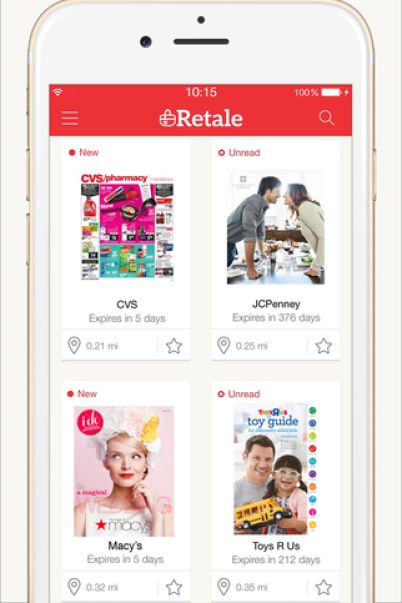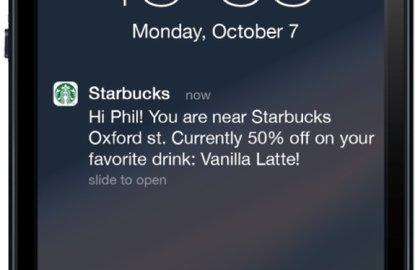 As retailers hunker down on perfecting their location-based marketing techniques, the tactic of integrating mobile advertisements with directions to bricks-and-mortar stores via map applications may be the strategy they are searching for.
As retailers hunker down on perfecting their location-based marketing techniques, the tactic of integrating mobile advertisements with directions to bricks-and-mortar stores via map applications may be the strategy they are searching for.
Although ads for strictly mobile or digital promotions are often times at the top of retailers’ sought-after marketing initiatives lists, the importance of fueling foot traffic to bricks-and-mortar locations cannot be understated. By serving nearby consumers enticing coupons or ad units – coupled with directions from Google or Apple Maps – brands can maximise their marketing spend and close the gap between physical and digital shopping experiences.
“[Regarding the] notion of getting it now – whether it is delivery, which a lot of retailers are experimenting with through Instacart and Postmates – bricks-and-mortar is the same thing,” said Pat Dermody, president of Retale. “You can walk down the street and get it now.”
Mobile-savvy consumers have nowadays come to expect interactive, informative mobile ad units as opposed to the stationary banner ads popular in previous years. One way for bricks-and-mortar marketers to incite shopping inspiration among individuals is to serve them smartphone ads containing directions to a nearby store.
This can be done by integrating the ads with mobile apps such as Google or Apple Maps, the former of which has already been innovating within this space.
With nearly one-third of all mobile searches related to location, according to Google, new location extensions will help advertisers showcase their business locations in search results (see story).
Brands can also join forces with third-party mobile couponing platforms to complete this initiative. For example, Retale’s shopping deals app contains a Store Finder feature that displays brands’ available circulars and promotions alongside the stores’ exact distance from the user’s current location.

Retale’s Store Finder feature
This way, if an individual becomes inspired to purchase cosmetics from CVS after seeing a promotion for Revlon products, she can tap to receive walking directions and pick up her desired items within minutes. This circumvents the need to place an order for delivery and pay extra for speedy shipping if the products are needed imminently.
There are several strategies that retailers can use to implement map-integrated mobile ads effectively.
“The end user experience should always be the number-one focus,” said Lara Mehanna, advisor at Sonata USA. “Even Google is open about the fact that when you implement too many ads to make it too busy on a map product that is driven by actual utility of the consumer, you are challenged by only upsetting them.
“The experience has to be useful and helpful,” she said. “With retailers, I think there will be an obvious fit for those that make sense to people on the go. I cannot help but think about gas stations and restaurants being extremely obvious and then also pharmacies, supermarkets, big-box stores that sell everything, etc.
“Ultimately, it is prime real estate that a retailer can test out to grab the attention of potential consumers.”
Some of the main challenges marketers may face when implementing this strategy are location accuracy and attribution, particularly for brands testing out this tactic for the first time and wanting to receive concrete proof of return on investment.
“[Retailers] have to test and measure attribution as well as branding,” Ms. Mehanna said. “There needs to be a very honest conversation with all delivery of the campaigns to understand whether or not this does a lift in awareness and/or sales.
“There also needs to be sufficient amount of conversation around how many sponsored ads will appear within the map – what is the threshold that consumers are willing to bear, is there an optimal location from the store to drive the best engagement.”

Mobile coupon redemptions can help with measuring ROI effectiveness
According to Retale’s Ms. Dermody, many retailers are tapping attribution as the one of the most important aspects of mastering location-based advertising. Users’ increasing willingness to relinquish personal data in exchange for relevant mobile experiences means that marketers will likely have an easier time of correlating smartphone behavior to in-store visits.
Additionally, a Forbes executive at the Mobile Marketing Association’s Mobile Location Leadership Forum predicted that location-based ads will eventually make up 40 percent of ad spend and the number of location-aware apps will triple by 2019 (see story).
“There is still a lot of untapped opportunity with out-of-home integrations,” Sonata’s Ms. Mehanna said. “These devices are more and more digital and thus will have great capability to identify patterns of locations that can be valuable to retailers and advertisers.
“I think that we will start to see more and more connection and identification of consumers across their devices and the locations they are in. Build purchase flow on top of this, and you can connect the dots from first exposure of the ad to actual conversion (identifying and optimizing the path along the way).”
Source: Mobile Marketer

You must be logged in to post a comment Login